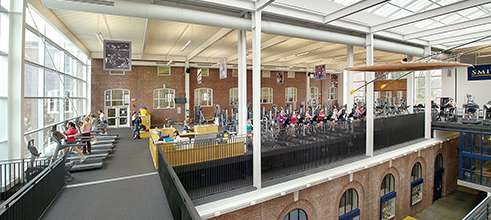Document Type
Article
Publication Date
2024
Abstract
The years surrounding the transition to menopause are marked by multiple challenges to health. Hot flashes are a commonly reported symptom of women at this time and their frequency has been associated with disease risk. Regular physical activity and reduced sedentary time are recommended for health and wellbeing. However, the effect of physical activity and sedentary behavior on hot flashes remains unclear. OBJECTIVE: The purpose of this study was to evaluate relationships between physical activity, sedentary time and hot flashes during both waking and sleeping periods using concurrent objective and subjective measures of hot flashes in midlife women. METHODS: Women aged 45-55 (n=196) provided self-reported data on physical activity and underwent 24-hours of hot flash monitoring using sternal skin conductance. Participants used event marking and logs to indicate when hot flashes were perceived. Wake and sleep periods were defined by actigraphy. Mean ambient temperature and humidity were recorded during the study period. Generalized linear regression modeling was used to evaluate the effect of physical activity types and sedentary time on hot flash outcomes. Isotemporal substitution modeling was used to study the effect of replacing sedentary time with activity variables on hot flash frequency. RESULTS: Modeled results indicated that increasing sitting by one hour was associated with a 7% increase in the rate of objectively measured but not subjectively reported hot flashes during sleep. Replacing one hour of sitting with one hour of vigorous activity was associated with a 100% increase in subjectively reported but not objectively measured waking hot flashes. There was little evidence for an effect of temperature or humidity on any hot flash outcome. CONCLUSIONS: These data provide support for relations between sedentary time, physical activity and hot flashes and highlight the importance of using objective and subjective assessments to better understand the 24-hour hot flash experience.
Keywords
Physical activity, sedentary time, hot flashes, hot flash measurement, isotemporal substitution modeling
Creative Commons License

This work is licensed under a Creative Commons Attribution 4.0 International License.
Rights
Licensed to Smith College and distributed CC-BY under the Smith College Faculty Open Access Policy.
Version
Author's Accepted Manuscript
Recommended Citation
Witkowski, Sarah; White, Quinn; Shreyer, Sofiya; Brown, Daniel E.; and Sievert, Lynette Leidy, "The Influence of Habitual Physical Activity and Sedentary Behavior on Objective and Subjective Hot Flashes at Midlife" (2024). Exercise and Sport Studies: Faculty Publications, Smith College, Northampton, MA.
https://scholarworks.smith.edu/ess_facpubs/45


